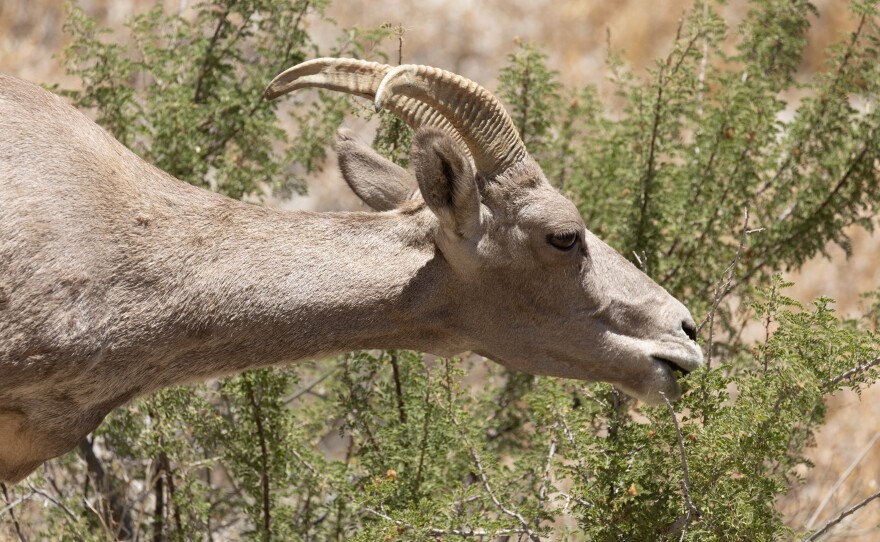It was supposed to be the 50th anniversary of a citizen scientist tradition. Every year for three days in early July, volunteers hike into the Anza-Borrego Desert State Park, sit in the shade all day and count sheep.
These hearty volunteers have helped keep tabs on the Peninsular Bighorn Sheep, which are endangered. Callie Mack has been volunteering for 35 years.
“You hike up there, and you’re all hot and sweaty and you’re carrying some gear and you’re saying to each other, why do we do this every year, this is just miserable,” Mack said. “All of a sudden you start seeing sheep coming down to get a drink or come into your count site and everything changes, it’s like the sun coming up.”
RELATED: Sheep Counting In Anza-Borrego Doesn’t Put Volunteers To Sleep
But tragedy struck this year. Right before the scheduled count, a volunteer died of heat stroke after being out in the 116-degree heat stashing water for sheep counters to use. The California State Parks Department decided to cancel the count. Mack and a number of the other volunteers were not happy.
“Honestly we felt like we’d been slapped hard in the face by state parks,” she said. “They might have made some modifications, they could have gathered us all together beforehand and said, ‘look, we don’t want this to happen again, be extra cautious.’”
The Parks Department refused an interview request, but spokesman Jorge Moreno sent a statement.
“While California State Parks appreciates the citizen science surveys, it should be noted this data set is only one piece of the overall bighorn sheep recovery plan,” the statement said. “As the lead agency, the California Department of Fish and Wildlife provides scientific data collection including GPS monitoring of herds, radio collar tracking of ewes, field and wildlife camera counts and observations, as well as, aerial surveys which are the basis for the health of the Anza Borrego Desert Bighorn Sheep population.”

But researchers at Oregon State University say a combination of all methods, including first hand observation, is best.
Professor Clinton Epps answered questions from KPBS while in the Mojave Desert, where he is tracking bighorn sheep. He monitors their populations by checking for parasites in their droppings.
“We’ve been here about 20 minutes, and a collared ewe did just drop pellets so we’ll collect the samples and then move on and try to find a different group of sheep,” Epps said as he worked.
An annual census done in the same way every year is also important, Epps said.
“That's a long dataset and we don't have many long data sets in this business like that,” he said. That dataset helps researchers like him know whether conservation efforts are working.
In-person counting can also spot issues like disease, said Mark Jorgenson, a former state parks superintendent and bighorn count veteran. And, he said, the counts make for more sheep advocates.
“The counters become very well informed about what’s going on in the environment, they become informed citizens, informed voters, letter writers, they let their voices be heard to legislators,” he said. “I’ve been to public meetings where on one side are golf course developers, and they’re spewing out a lot of misinformation, and then on the other side are citizens who call them out on factual misinformation, basically calling bullshit on them.”
But not this year. The state parks department said they’ll work on safety plans so the count may return in the future.
If it doesn’t, Mack said more will be lost than just a sheep census.
“It makes more ordinary citizens aware of why the bighorn needs protection,” she said.
At last count, there were less than 800 Peninsular Bighorn sheep.








